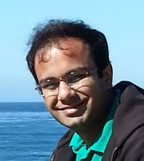Dynamic Spectrum Access by Learning Network Topology

Mihir Laghate – Ph.D. Candidate
DEPARTMENT RESEARCH FORUM
Conventionally, networks are designed to operate in frequency bands that they have full autonomy on. Increasingly however, proposals are being made to share spectrum when it is either underutilized or cheap. For example, the 700MHz TV white space band is underutilized in spectrum, the 3.5GHz band licensed for radar use is underutilized in terms of spatio-temporal resources, and the unlicensed 2.4GHz and 5GHz ISM bands are cheap for deploying new networks based on newly proposed standards such as LTE-Unlicensed. Our work proposes learning and classification techniques so that these new networks can use cognition to blindly detect multiple incumbent transmitters and avoid interference to them.
In this talk, I will be describing our work on identifying the spatial extent of spectrum holes formed by multiple transmitters. The novelty of this work is that we identify multiple transmitters without knowledge of radio locations, channel models, and communication protocols. We also do away with conventional assumptions about uniform channel environments and isotropic radiation patterns of transmitters in order to enable coexistence with today’s advanced communication technology. Finally, I will be outlining our goal of using this information to learn the incumbent network topology in terms of location of incumbent transmitters, association of incumbent users to networks, and the channel access method of incumbent users.
Advisor: Prof. Danijela Cabric
Date/Time:
Date(s) - Oct 14, 2015
12:00 pm - 1:30 pm
Location:
E-IV Tesla Room #53-125
420 Westwood Plaza - 5th Flr., Los Angeles CA 90095
